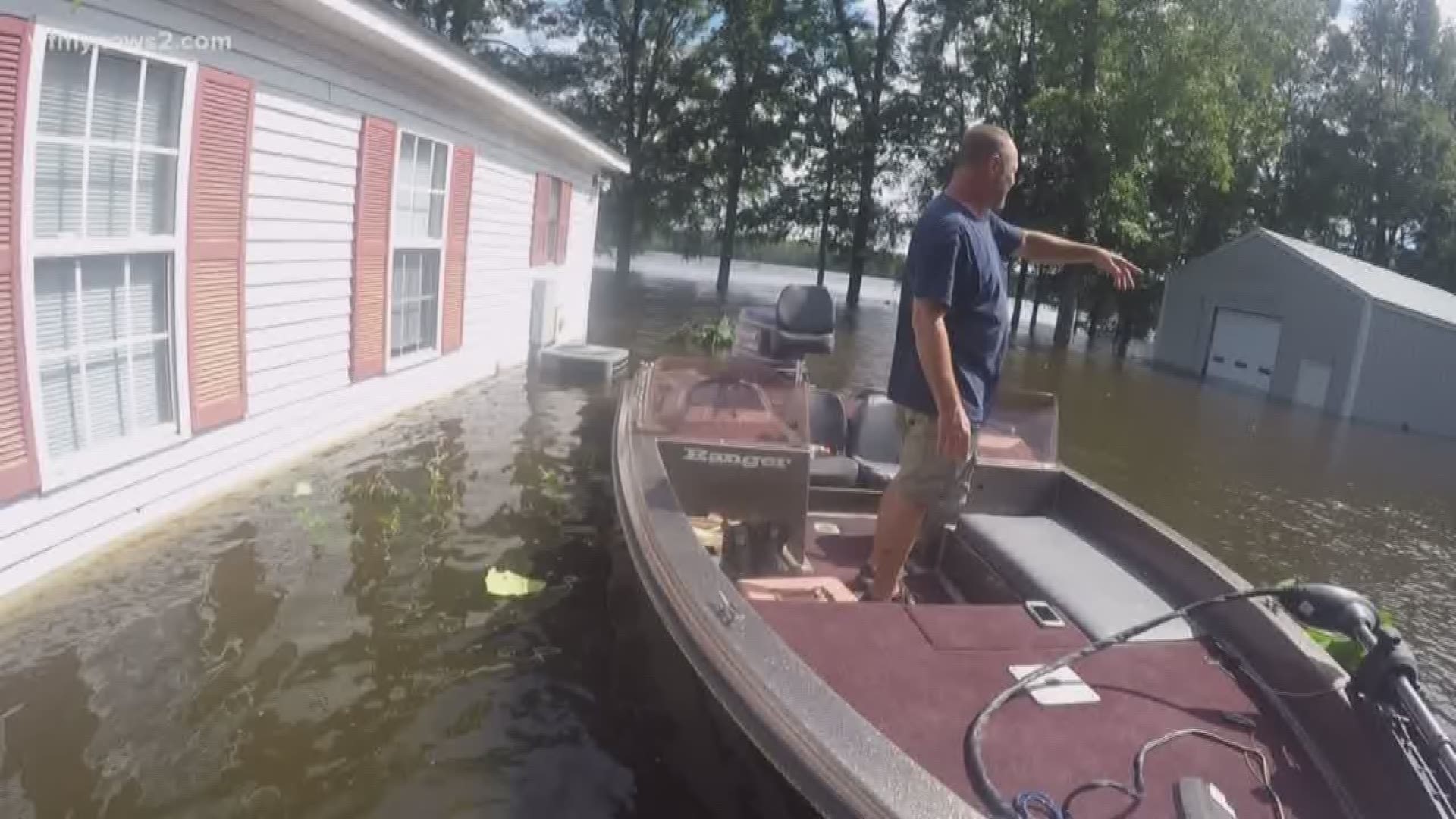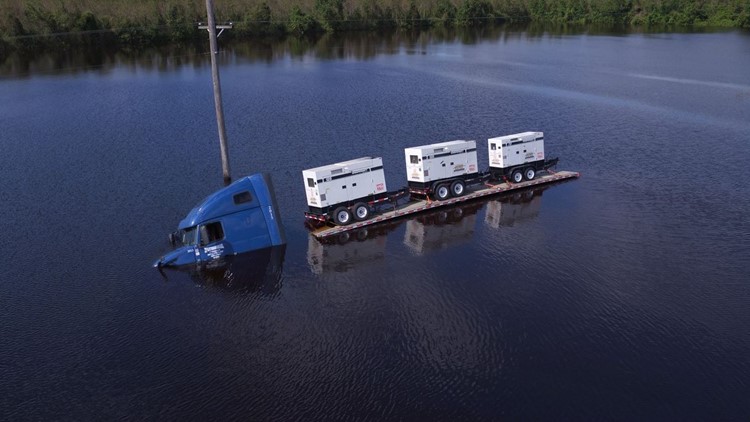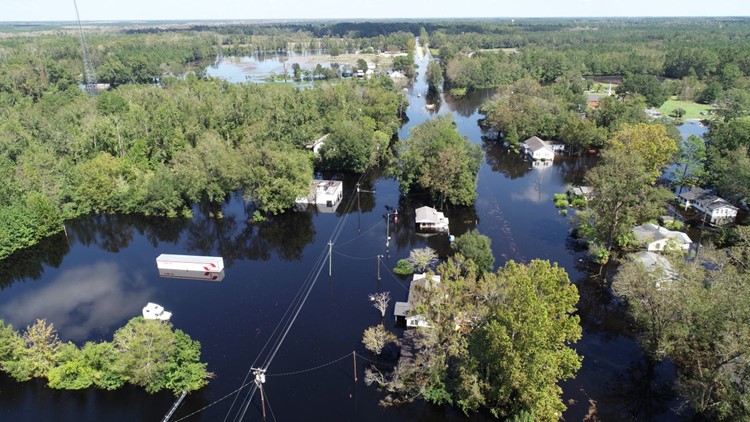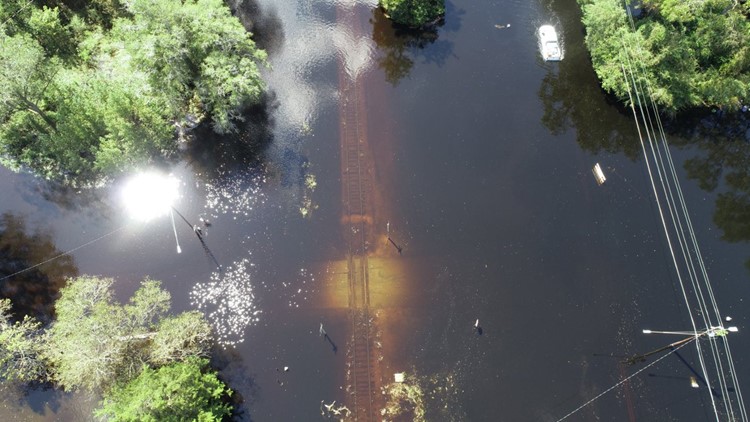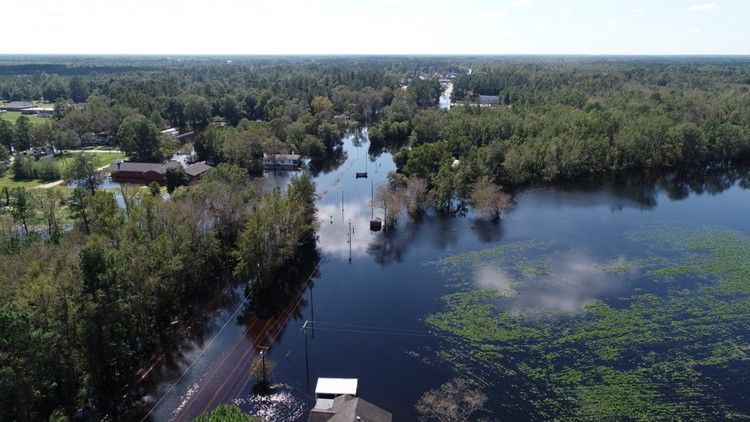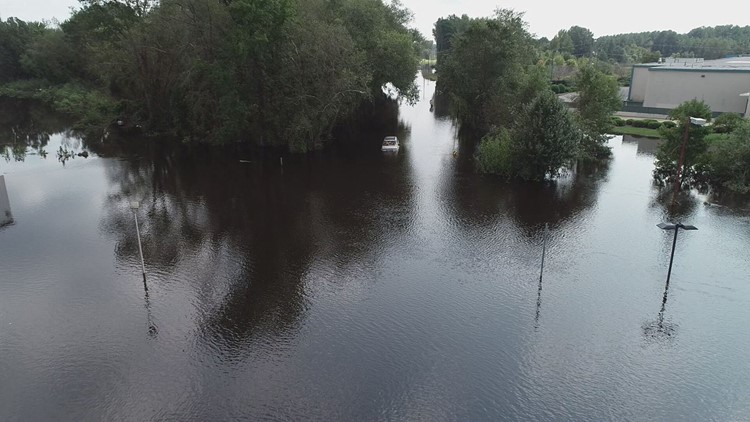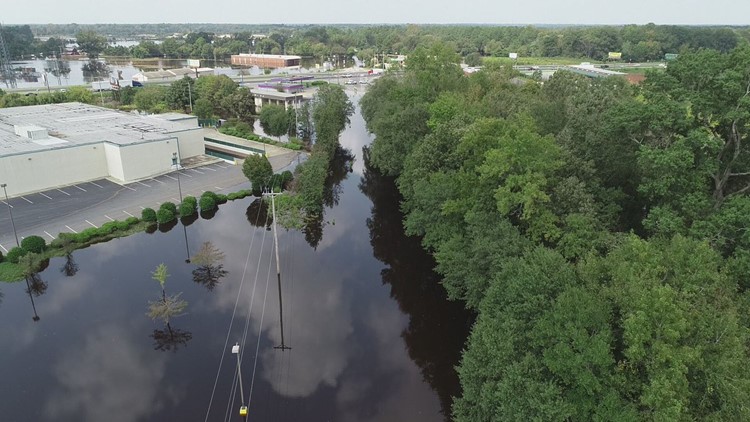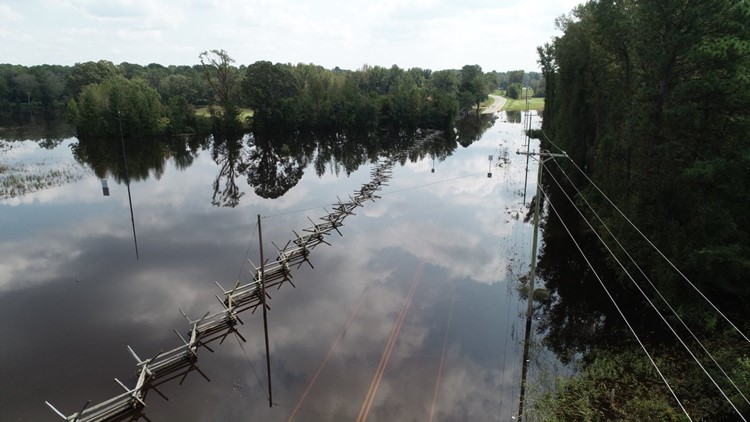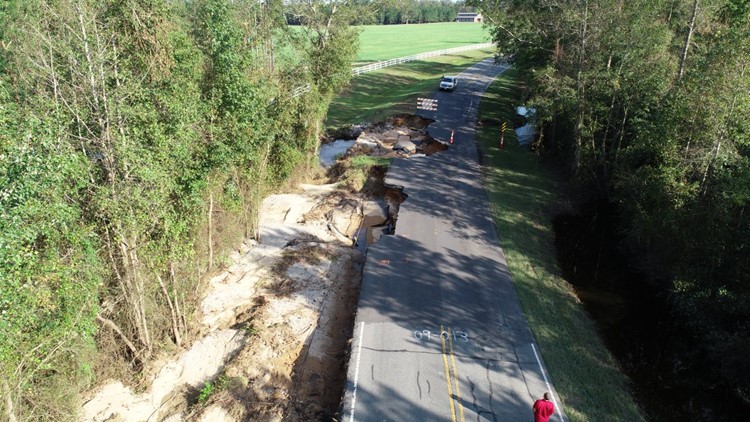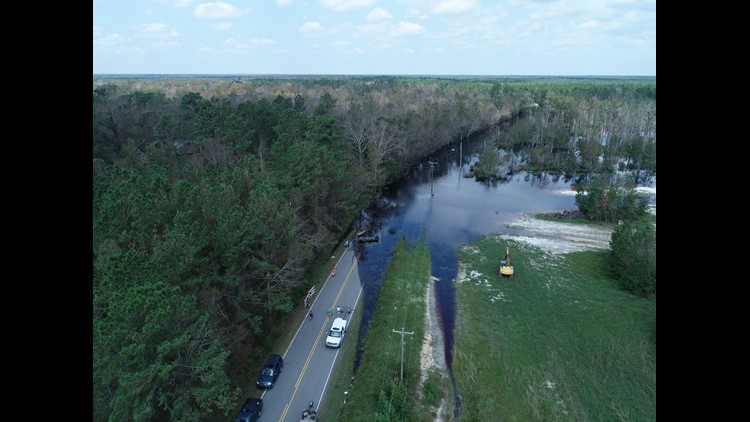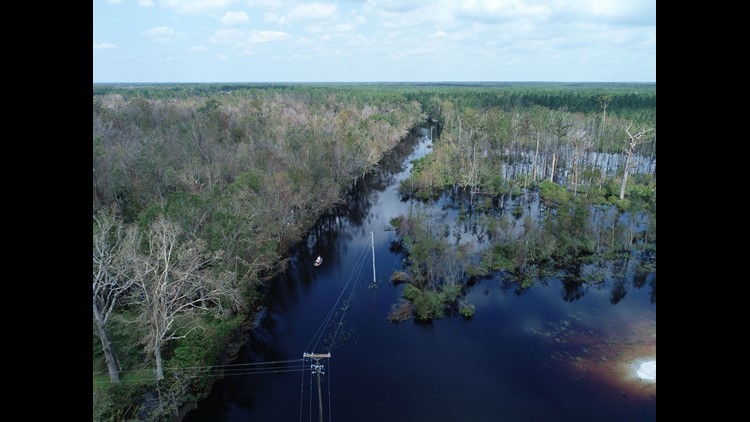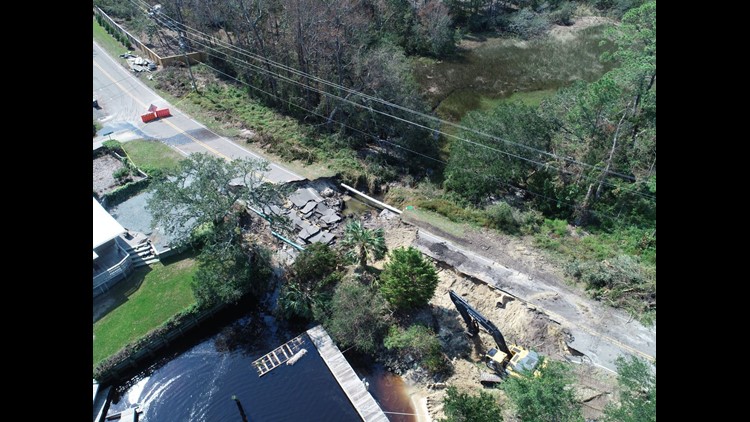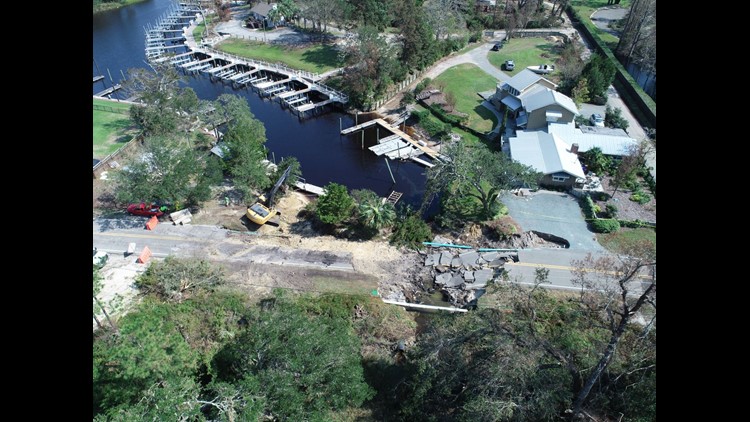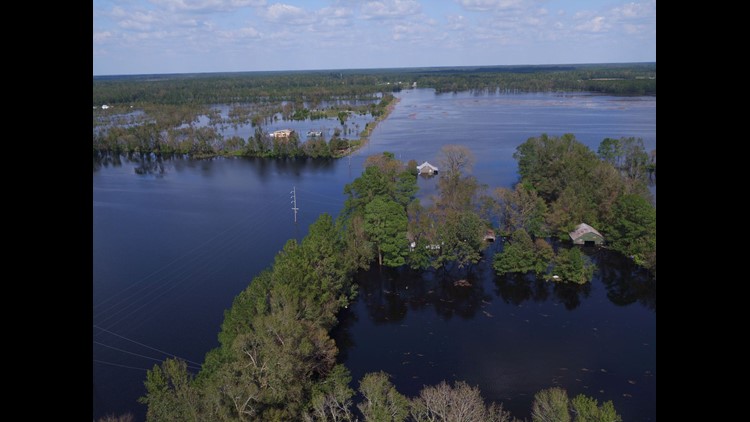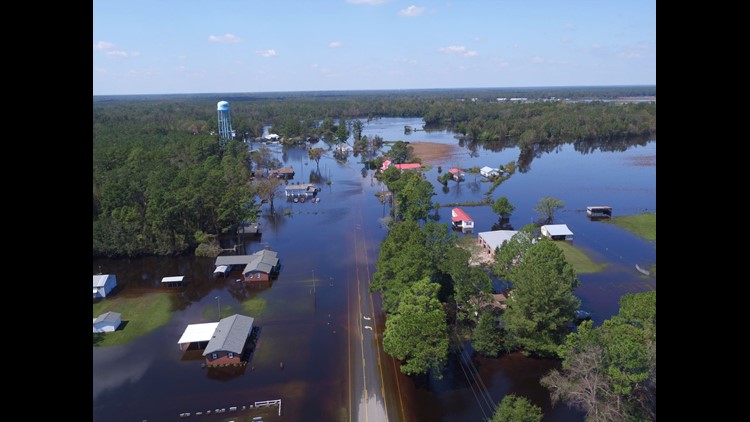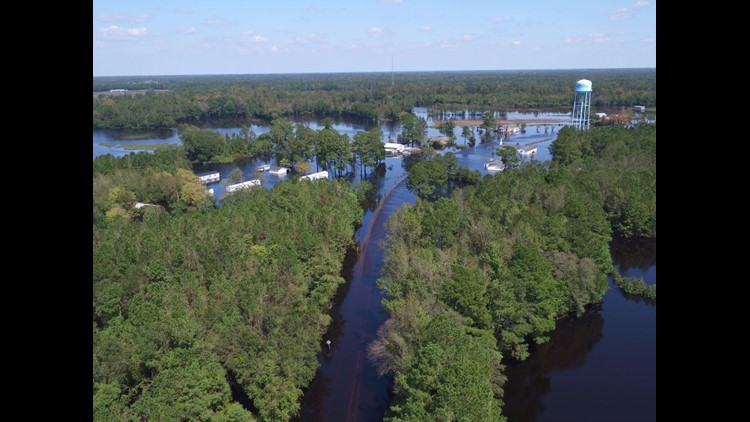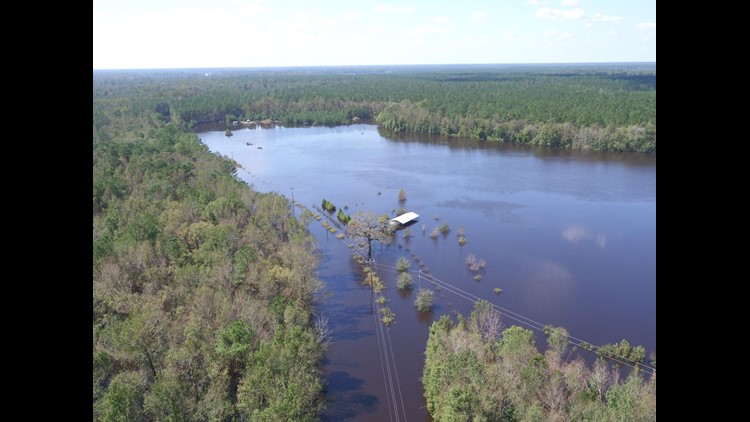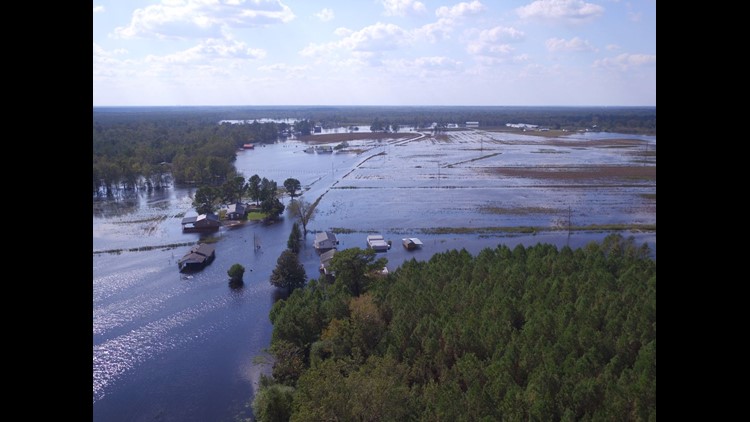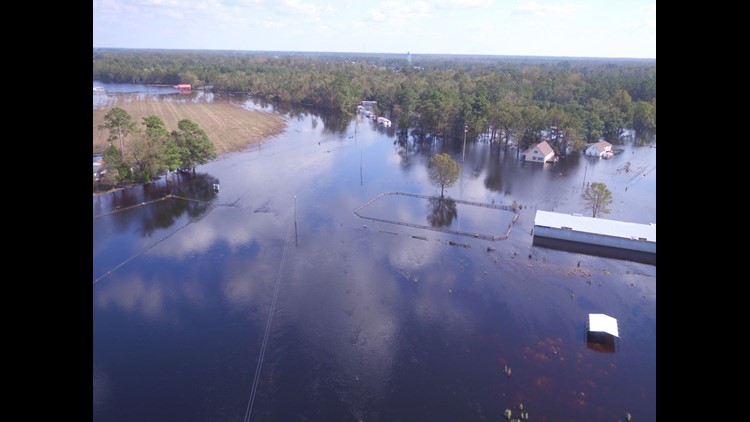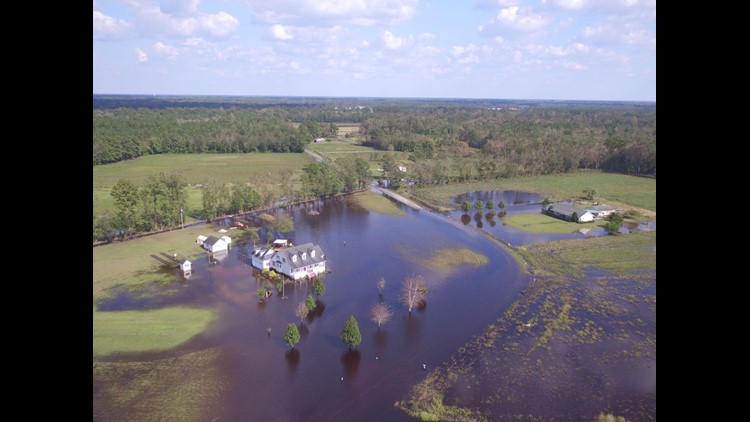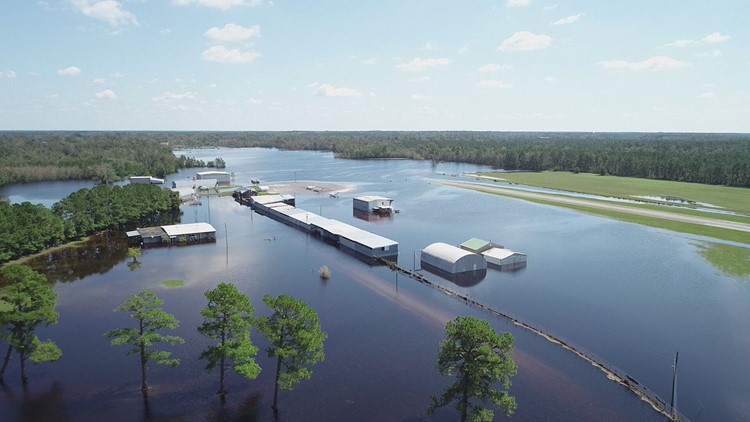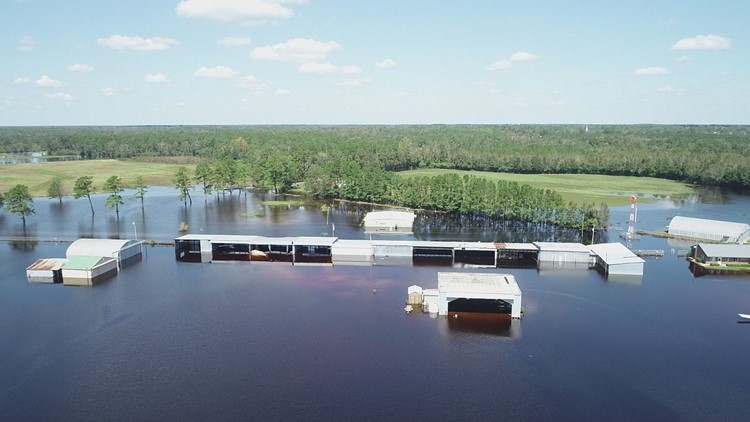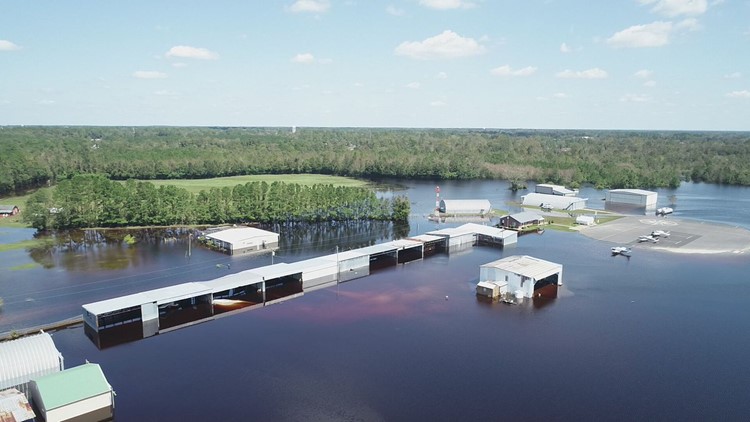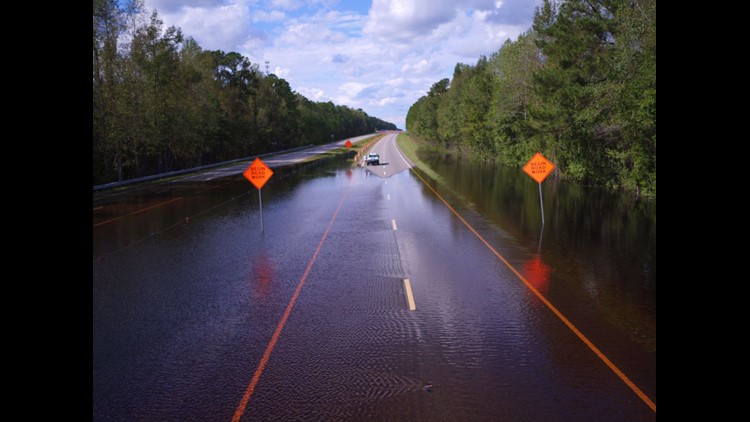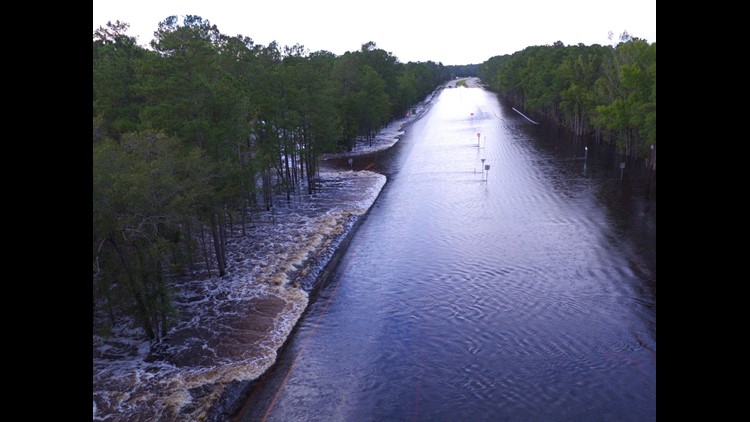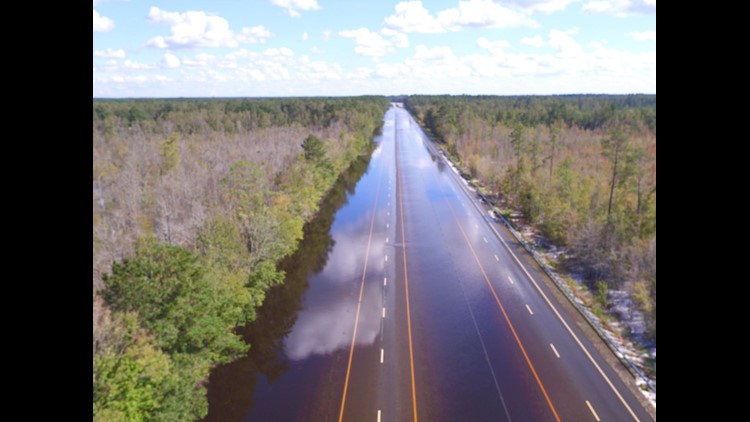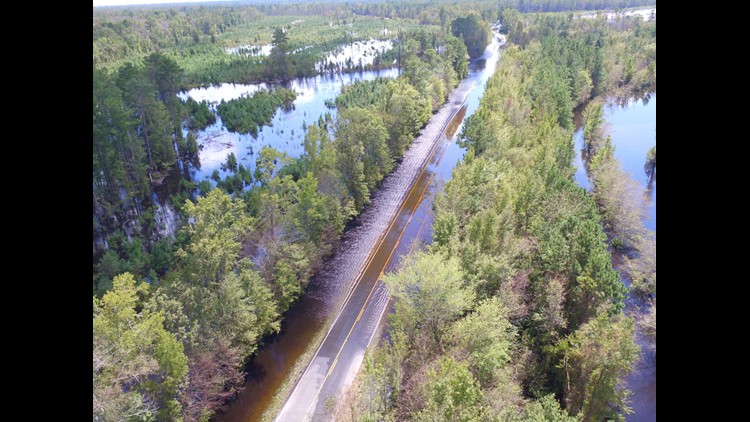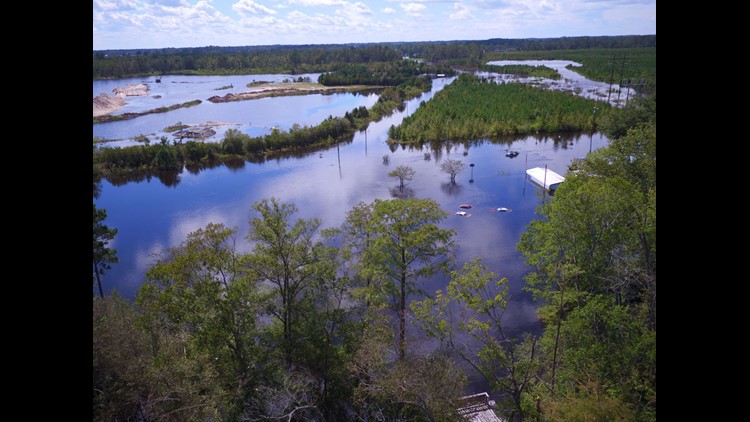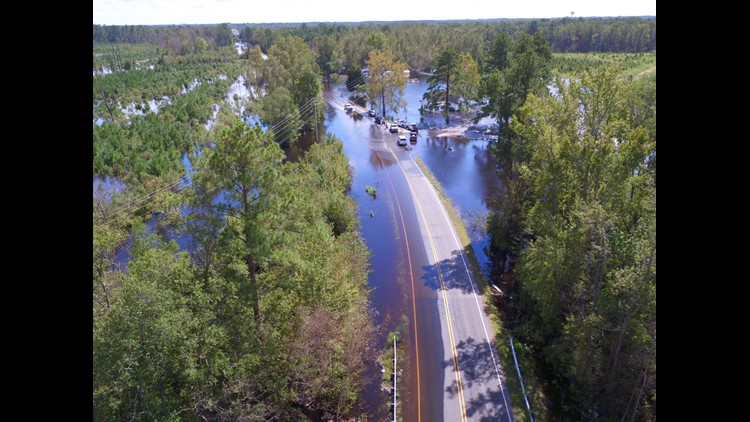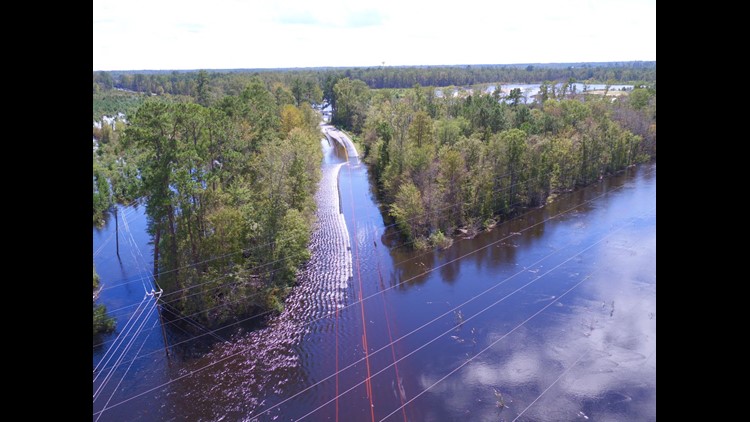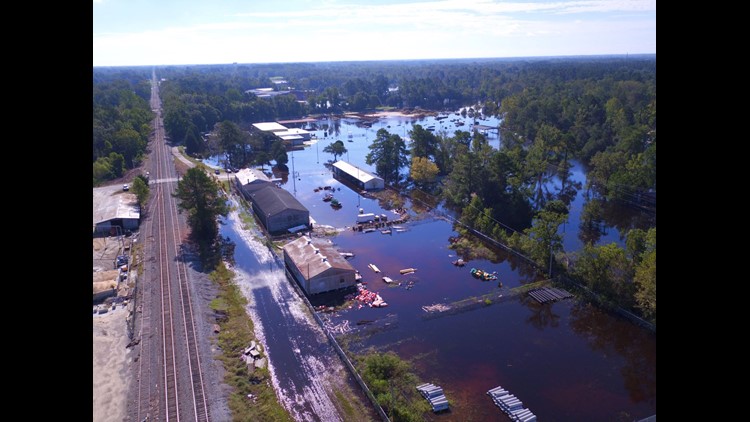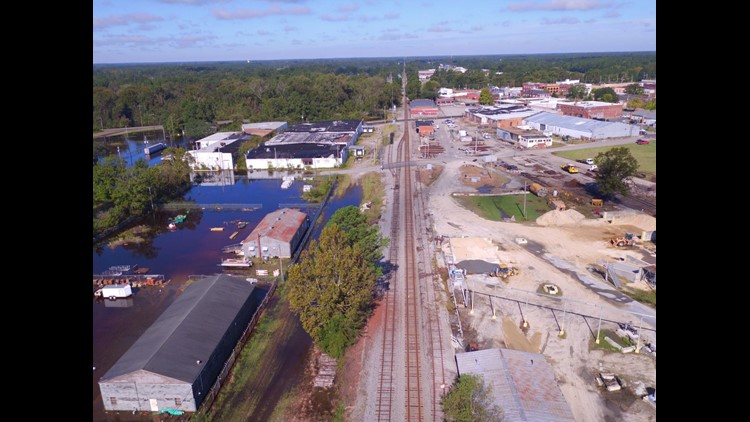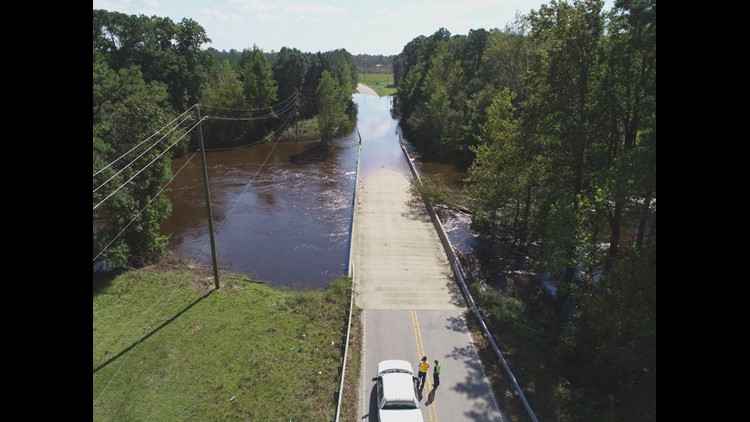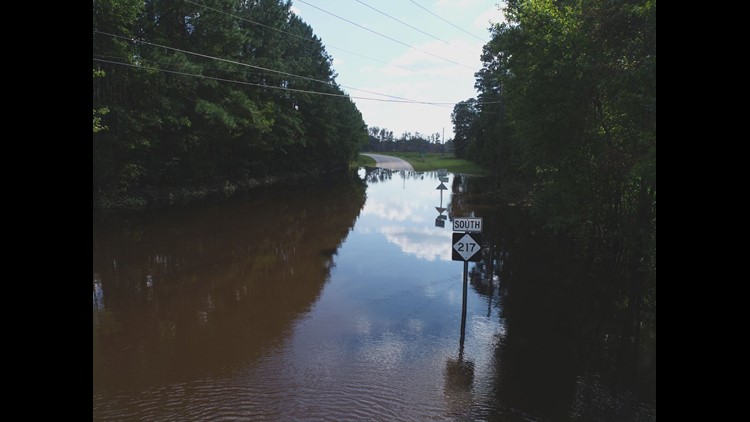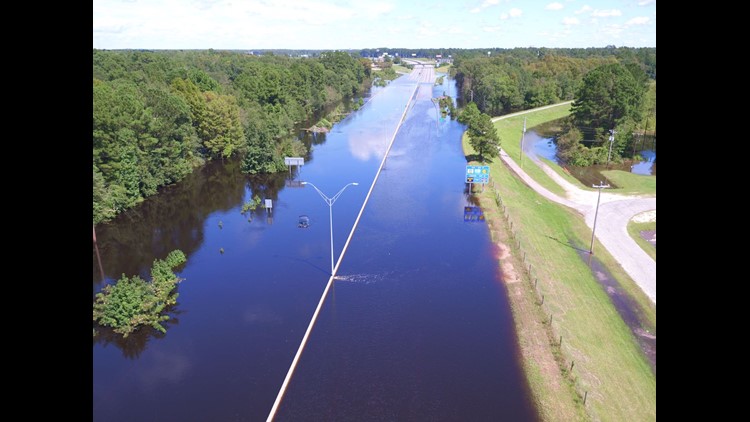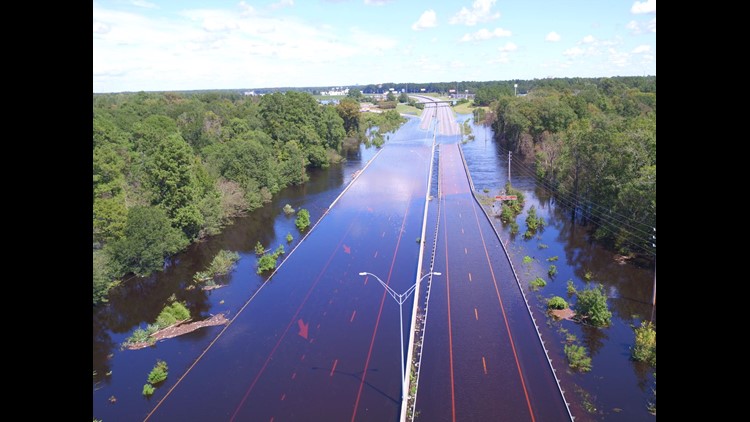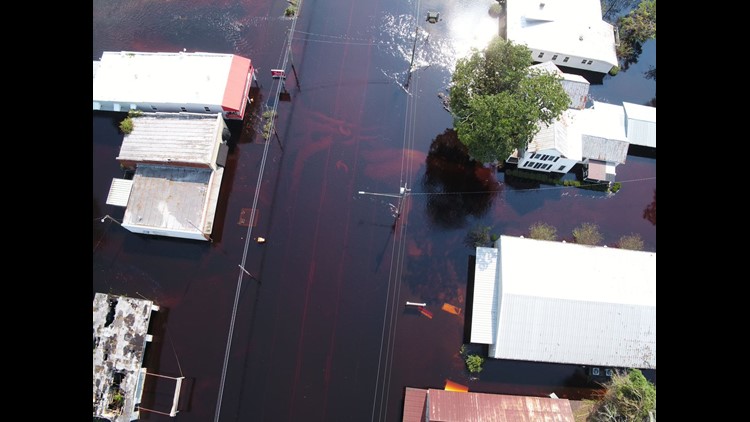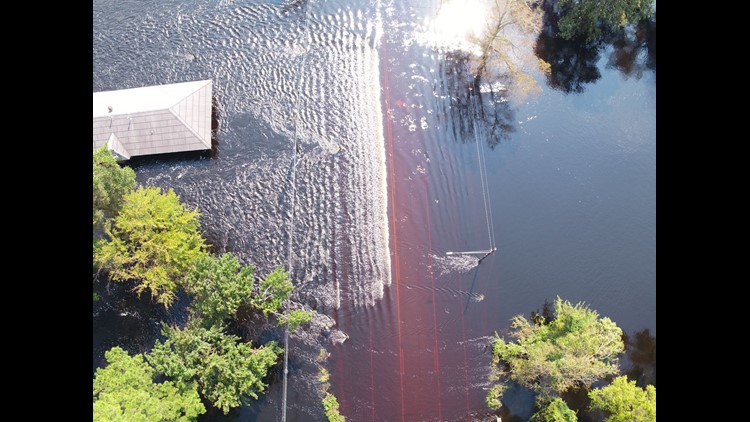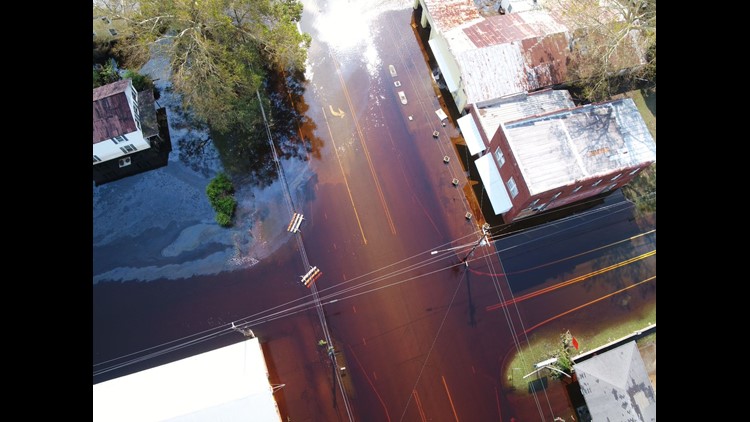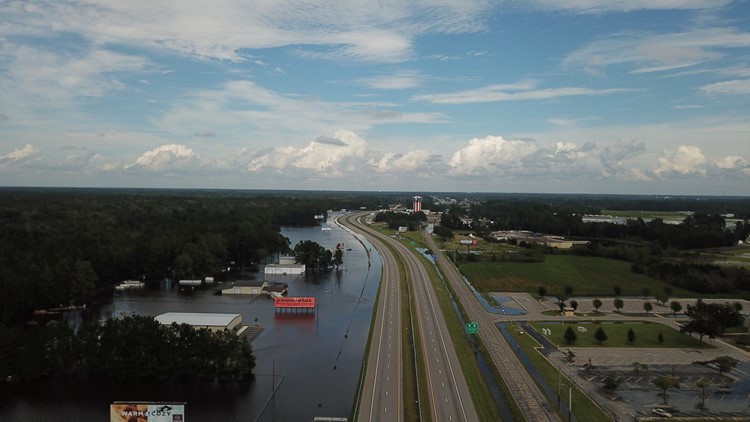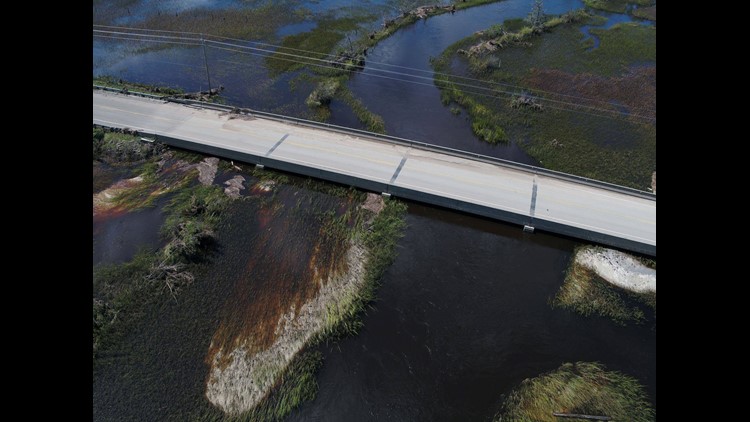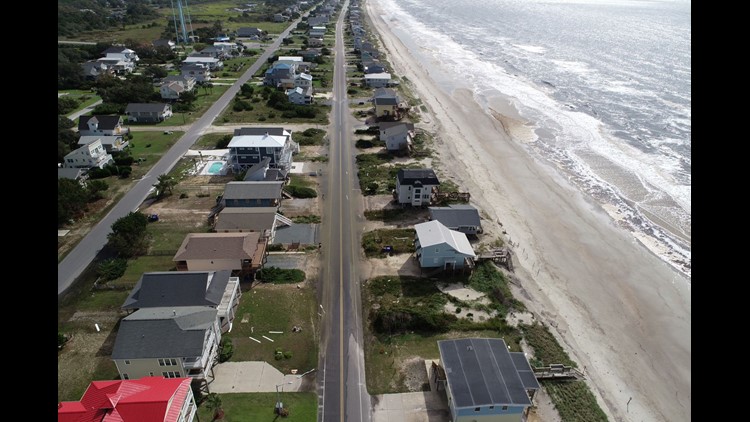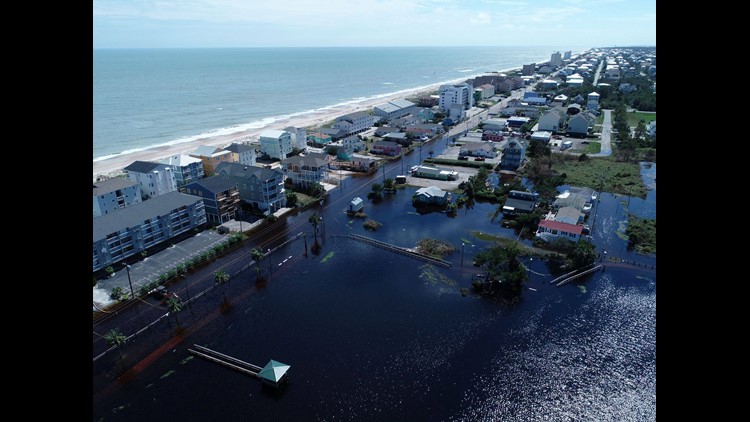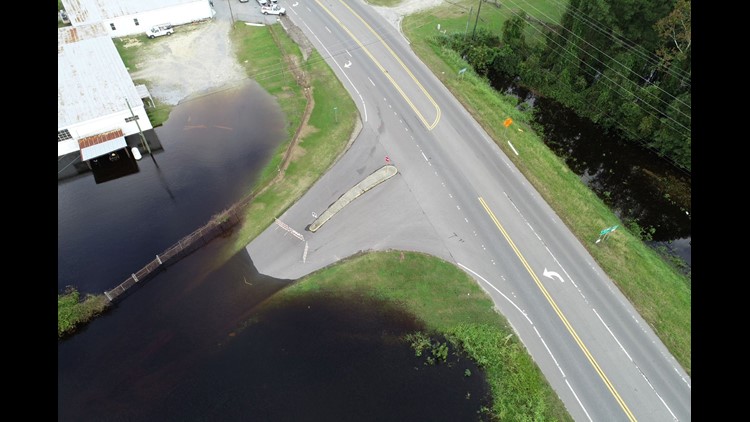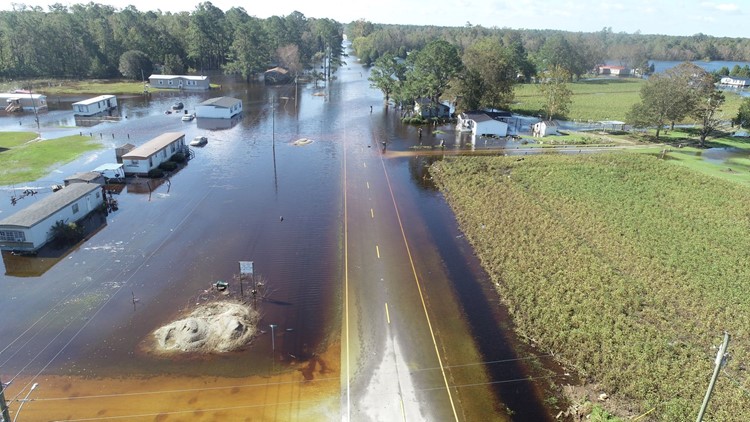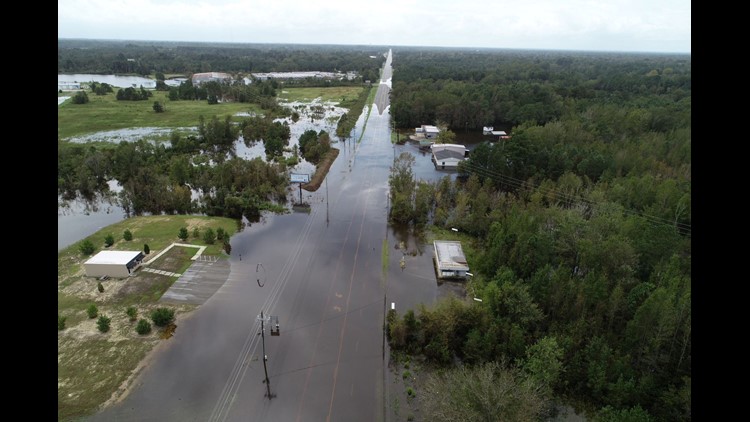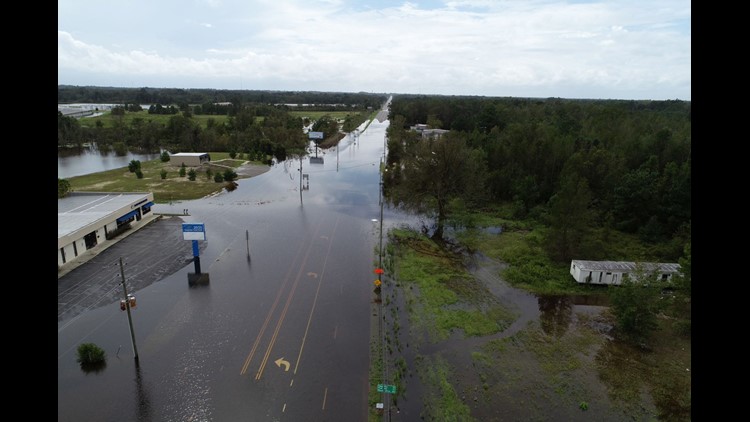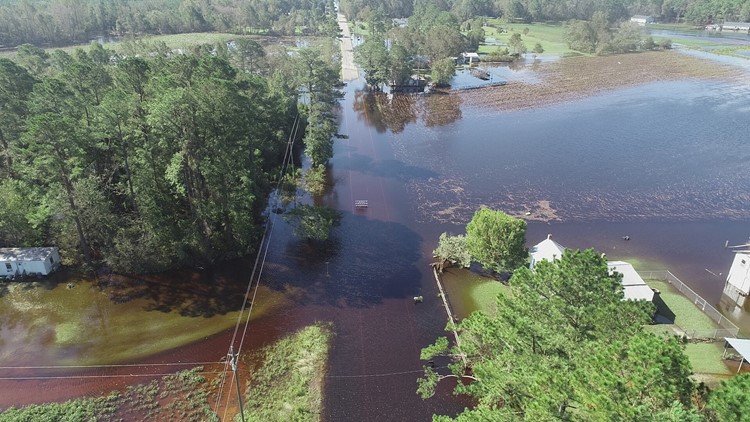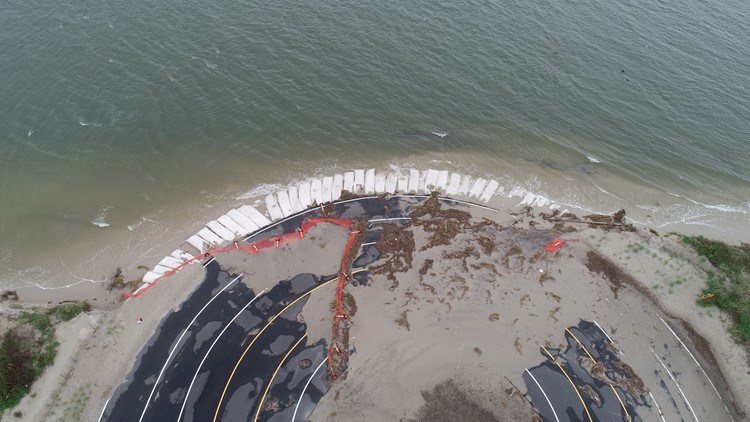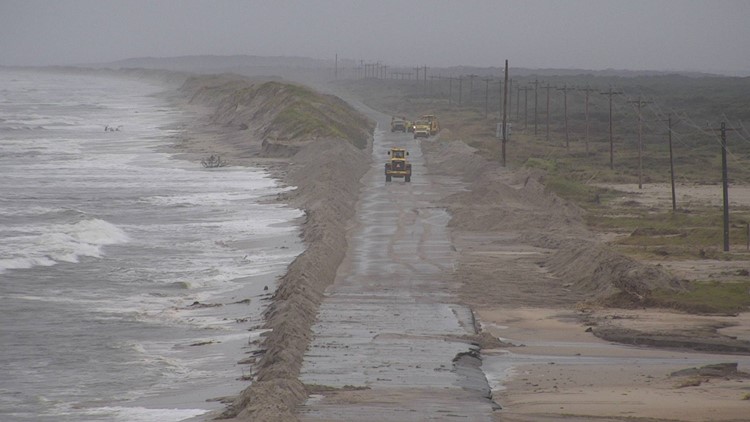WILMINGTON, N.C. (AP) — Hurricane Florence is still wearing out the Carolinas, where residents have endured an agonizing week of violent winds, torrential rain, widespread flooding, power outages and death.
Frustration and sheer exhaustion are building as thousands of people wait to go home seven days after the storm began battering the coast. Roads to Wilmington, which has been cut off sporadically by Florence, are opening and closing as floodwater rushes to the coast.
Florence is blamed for at least 37 deaths, including those of two women who drowned when a sheriff's van taking them to a mental health facility was swept off a road.
"I'm just ready for this to be over, to be honest," said Evan Jones, a college student who evacuated from Wilmington and doesn't know when he will get back. "I'm trying to get it all out of my head."
With the remnants of Florence finally out to sea and skies bright over rivers still swelling with muddy water, President Donald Trump visited the disaster zone, riding through soggy neighborhoods and helping pass out warm meals at a church.
"America grieves with you and our hearts break for you. God bless you," Trump said during a briefing in Havelock, North Carolina.
There wasn't any presidential fanfare 120 miles (190 kilometers) away in Fayetteville. There, Roberta and Joseph Keithley had been sleeping on cots set up in a school classroom since Friday. They still didn't know if their home was ruined.
PHOTOS | Stunning Aerial Images Shows Scope of Florence Wrath in NC
"It's getting a little frustrating, but you have to deal with it and roll with the punches," said Roberta Keithley, 73. "It's just another hurdle to get over in life."
To the south, daybreak brought a return of floodwaters to Nichols, South Carolina, which also was inundated by Hurricane Matthew two years ago. The flooding from Florence had subsided, only to get worse again.
Mayor Lawson Battle said that as far as he knew, everyone in the town of about 360 people evacuated as the water first started to invade town Monday. But Battle just couldn't think about that anymore.
"I'm focusing on this disaster at hand," he said. "I don't have time to think. I'm just so tired."
Ferry service for the public has resumed for several coastal routes in North Carolina. Meanwhile, a section of Interstate 95 was closed anew because bridges crossing the Great Pee Dee River flooded, said officials in South Carolina.
Access improved at least temporarily to Wilmington, a North Carolina port city of 120,000 that has been isolated for days by high water. But the state said in a Tweet late Wednesday: "No safe, stable and reliable route currently exists for the public to get to and from Wilmington."
Officials said they didn't know when evacuees would be able to return home to the city, where officials are distributing food and water, and it may be next week before conditions improve drastically since the Cape Fear River isn't expected to crest at the city until Monday or Tuesday.
"Understand: There is a lot of water inland, and it is continuing to make its way downstream," county manager Chris Coudreit said.
Nearly 3 feet (0.9 meters) of rain fell in places, and dozens of cities had more than 10 inches (25 centimeters) of rain. Roads remained dangerous, and some were still being closed as swollen rivers emptied toward the ocean.
North Carolina officials said 7,800 people remained in shelters, down from about 10,000 on Monday, despite Gov. Roy Cooper's plea to stay put.
In Lumberton, where the Lumber River still covered parts of town, water was deep enough that vehicles passing by on streets sent wakes into partially submerged homes, businesses and a church.
Some of those who left shelters may have been headed toward the coast on U.S. 421, where a long line of cars, utility crews and trucks loaded with generators sat in a jam.
More content from WMFY News 2
About 110,000 homes and businesses were still without electricity in North Carolina, about 20 percent in the county where Wilmington is located. There, about 25,000 remain in the dark.
The deaths, which have occurred in three states, include those of two women who were being taken to a mental health facility when the van they were riding in was engulfed by floodwaters from the Little Pee Dee River in South Carolina, authorities said.
Horry County Sheriff's Department spokeswoman Brooke Holden said two deputies in the van tried to get the victims out but couldn't. Rescue teams plucked the deputies from the top of the vehicle. They were placed on leave pending an investigation.
Sheriff Phillip Thompson said he does not believe the women were in restraints like those sometimes used on psychiatric patients.
It wasn't clear why the women were being moved in the aftermath of a killer hurricane, and Justin Bamberg, a lawyer who has represented the families of several people injured or killed by law officers, said he was perplexed by the decision.
"If that road is in an area where it is a flood risk, and waters were rising, why were they driving on that road anyway?" said Bamberg, a state lawmaker.
At least 24 of Florence's victims died in vehicles, and most were in accidents linked to flooding.
North Carolina's farmers, meanwhile, are beginning to count up their losses.
The Tobacco Growers Association of North Carolina estimated up to 125 million pounds (57 million kilograms) of tobacco leaf could be damaged by flooding, winds and power outages, an amount that could translate to as much as $350 million in lost farm revenue.
Association CEO Graham Boyd said about 40 percent of the crop was still in the field when the storm hit. North Carolina is the nation's top producer of tobacco.
The flooding has killed an estimated 3.4 million chickens and 5,500 hogs, authorities said. Farmers are also concerned about cotton, sweet potatoes, peanuts and corn, but swamped roads and fields have made it difficult to assess the damage.
The risk of environmental damage from Florence mounted, too, as human and animal waste was washed into the floodwaters.
More than 5 million gallons (18 million liters) of partially treated sewage spilled into the Cape Fear River after power went out at a treatment plant, officials said, and the earthen dam at a pond holding hog waste was breached, spilling its contents.

